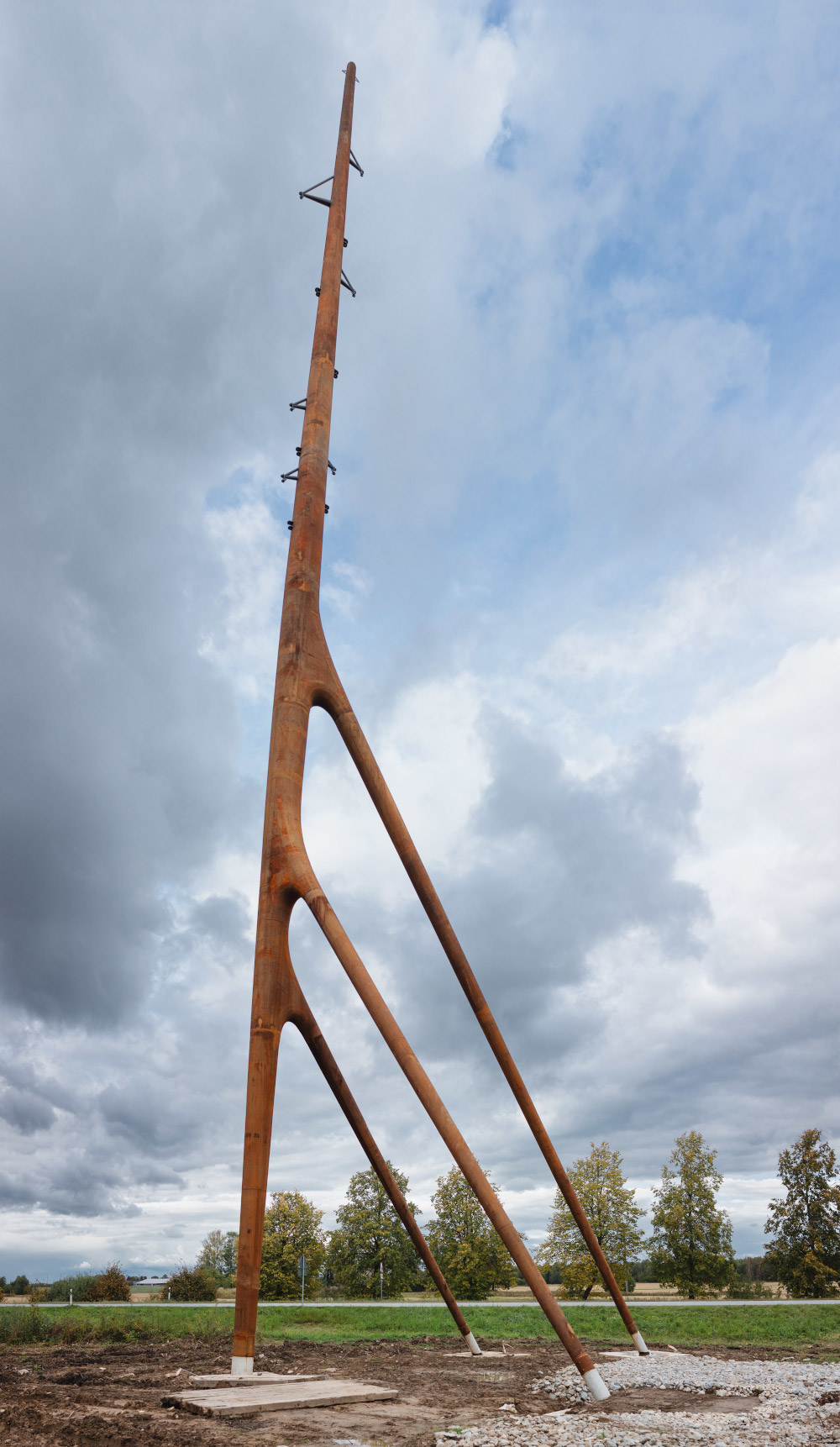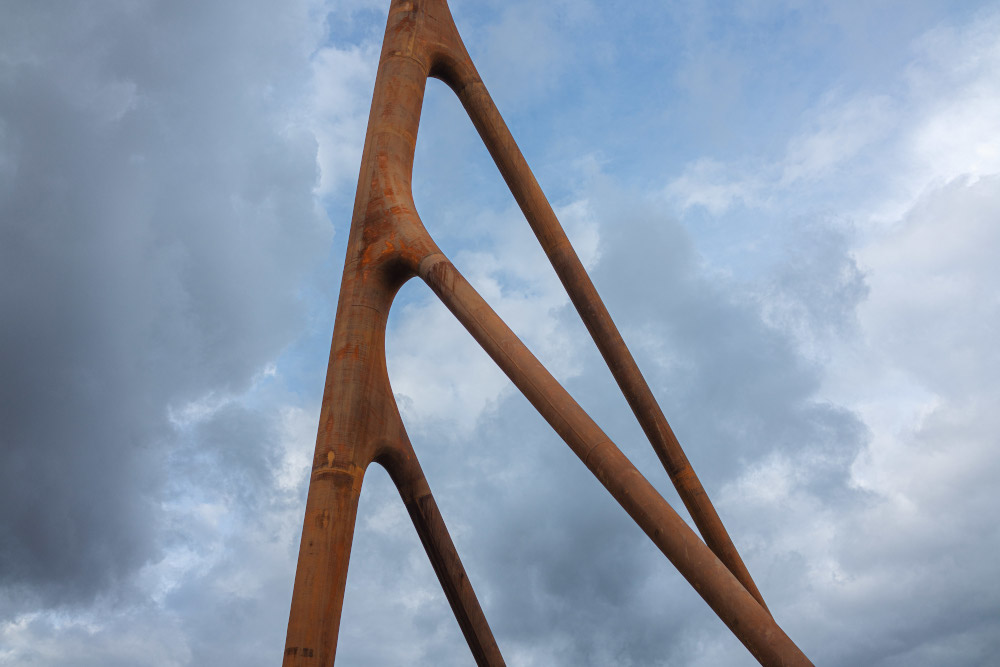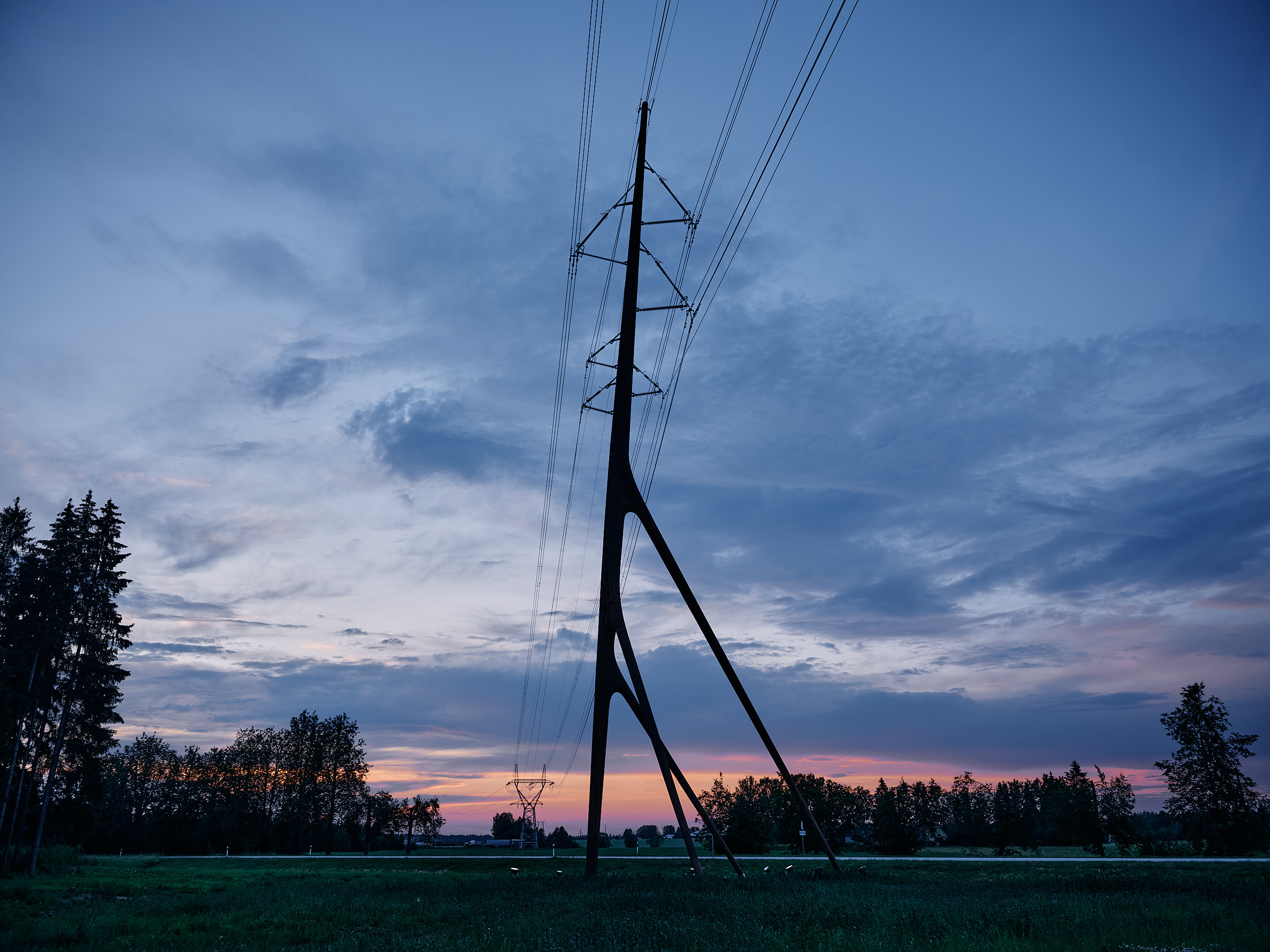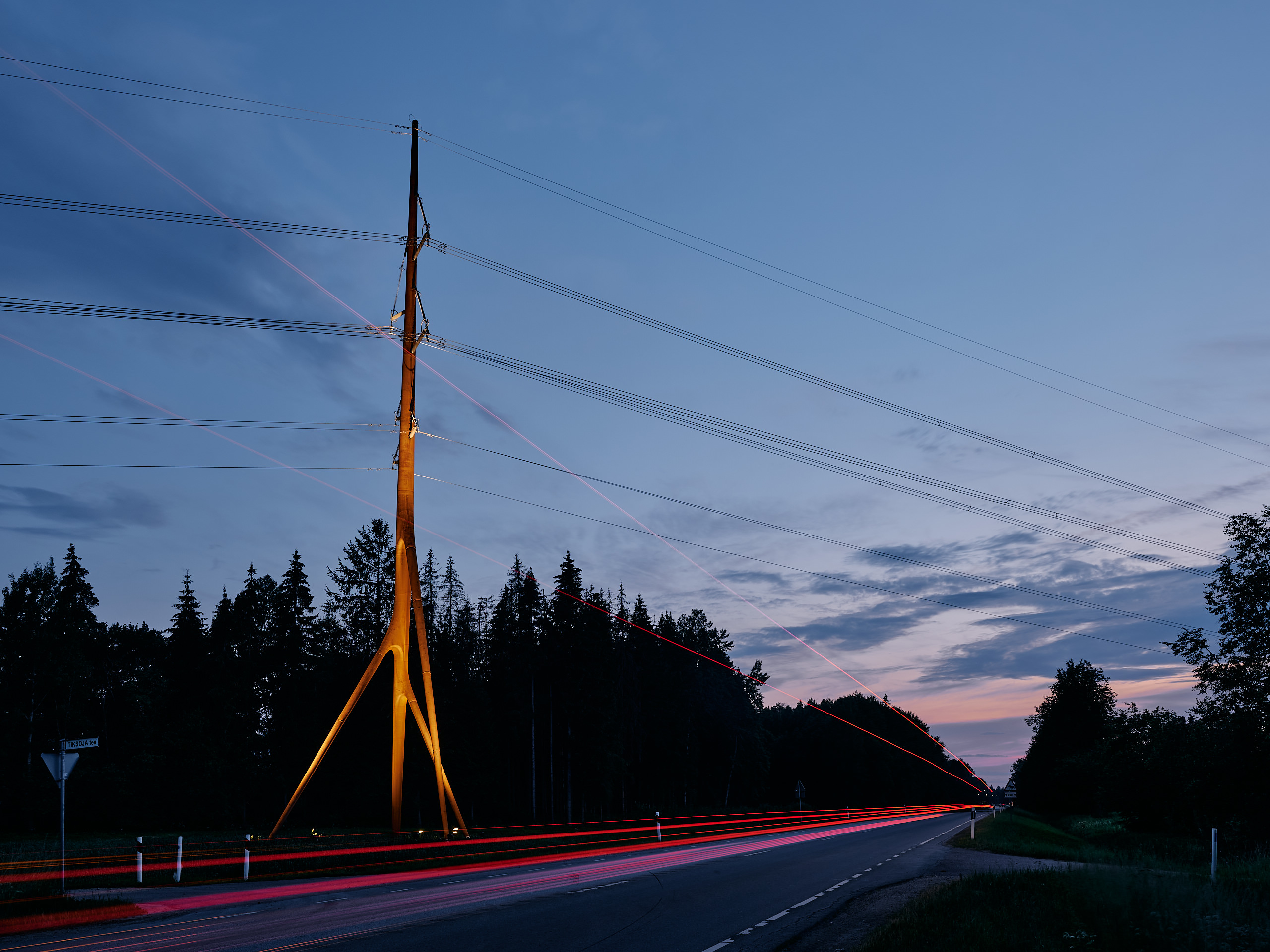Design highvoltage pylon Bog Crane
Inspired by the success of Estonia’s first high voltage line design pylon Soorebane (Bog Fox), Elering has decided to install the next design pylon as a part of the strategic project of joining the Continental European electricity grid. Estonia’s second design pylon was erected in August 2022 on the edge of the city of Tartu.
The design pylon Sookurg (Bog Crane) belongs to the same family as Soorebane, Estonia’s first design pylon erected in Lääne County in 2020. Both pylons were designed by architects Sille Pihlak and Siim Tuksam from the architectural practice PART.
Sookurg supports the cables of the powerful 330-kilovolt Baltic-Tartu transit line, also known as the Estonia-Latvia electricity connection, as well as a local 110-kilovolt power line. Sookurg is a part of a big project that will result in Estonia and the other Baltic countries disconnecting from Russia’s electricity grid by 2026 and joining the Continental European grid, thus ensuring a more secure electricity supply.
Also, Sookurg is an excellent example of Estonian infrastructure design by which Elering contributes to the living space, local identity and the development of the creative sector.





Photos: Tõnu Runnel
Facts about Sookurg:
- Sookurg is 44 metres high
- Sookurg weighs 18 tonnes
- Sookurg is made of COR-TEN steel
- Sookurg’s stem has a maximum diameter of 1.1 metres
- Sookurg’s stem has a minimum diameter of 0.45 metres
- Sookurg is anchored to the ground by 18 stakes that have a total length of 202 metres.
- Sookurg’s details were made in Romania and were brought to Estonia by two trucks
Press release:
Elering will erect the design pylon Sookurg for the high-voltage power line near Tartu | Elering